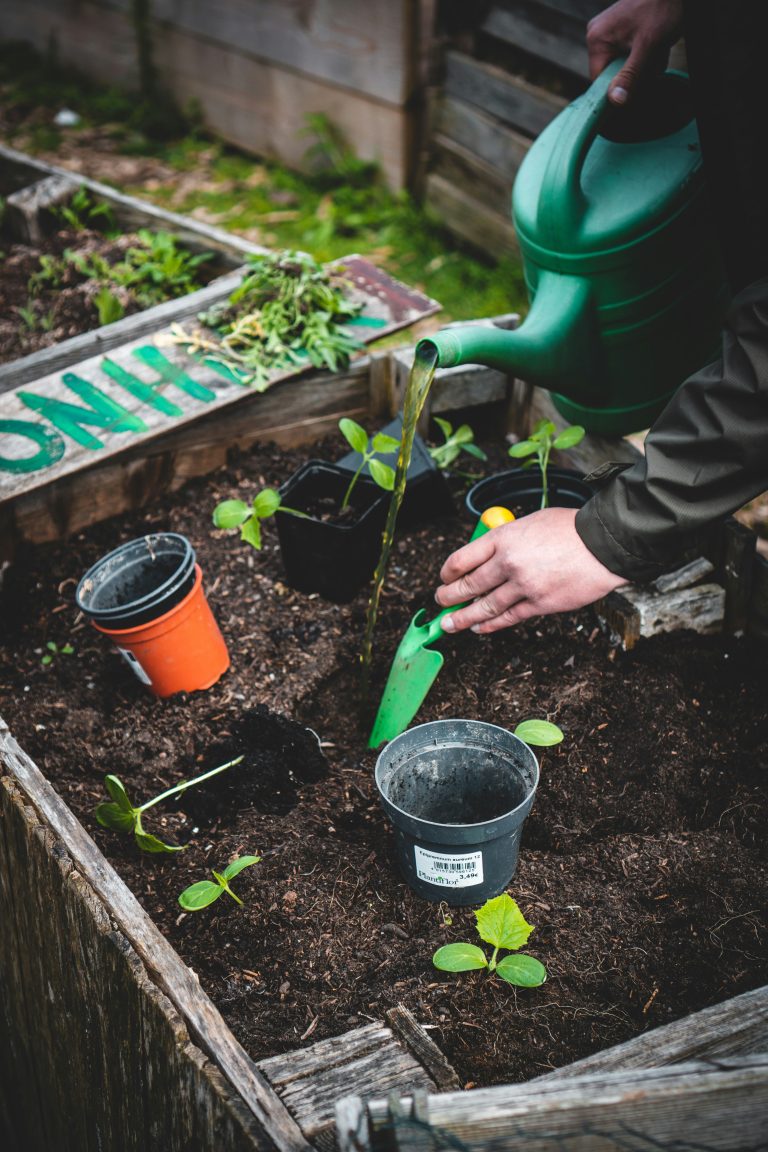As the winter season approaches, it’s time to start thinking about how to properly store your garden tools. With the cold weather and elements, it’s important to take the necessary steps to protect your tools and ensure they are in good condition for the next gardening season. From cleaning and organizing to storing them in a dry and secure location, this article will guide you through the best ways to store your garden tools during the winter.
Table of Contents
ToggleChoosing the Right Storage Location
Selecting an Indoor Storage Area
When it comes to storing your garden tools during the winter, one of the most important considerations is selecting the right storage location. An indoor storage area is ideal as it provides protection from the harsh winter elements. Look for a garage, shed, or basement that is dry and free from extreme temperature fluctuations. This will help prevent damage to your tools and ensure they are ready for use when the gardening season rolls around again.
Protecting Tools from Extreme Cold
Extreme cold can be detrimental to your garden tools. Freezing temperatures can cause metal to become brittle and can also lead to rust and corrosion. To protect your tools from extreme cold, it is essential to choose a storage area that remains above freezing. If you live in an area with extremely cold winters, consider insulating your storage space or using supplemental heating to keep the temperature above freezing.
Avoiding Exposure to Moisture
Moisture is another common enemy of garden tools. Excessive humidity or direct exposure to water can cause rust and corrosion, which can significantly shorten the lifespan of your tools. To avoid this, choose a storage location that is dry and well-ventilated. Avoid storing your tools directly on the floor, as this can promote moisture buildup. Instead, use shelves or pallets to elevate your tools and allow for better airflow.
Considering Space and Accessibility
When selecting a storage location for your garden tools, it’s important to consider both space and accessibility. Make sure you have enough room to store all of your tools without overcrowding. This will not only prevent damage to your tools but also make it easier to find and access them when you need them. Additionally, consider the layout of the storage area and ensure that you can easily navigate around it to retrieve tools without difficulty.
Clean and Dry the Tools
Removing Excess Dirt and Debris
Before storing your garden tools for the winter, it’s essential to give them a good cleaning. Start by removing any excess dirt, debris, or plant matter that may have accumulated on the tools. Use a stiff brush or a scraper to remove stubborn patches of dirt. This step is crucial as it prevents dirt from drying and sticking to the tools, which can make them harder to clean later on.
Scrubbing with Mild Soap and Water
Once you have removed the excess dirt and debris, it’s time to give your tools a thorough scrubbing. Fill a bucket with warm water and add a mild soap or detergent. Dip a sponge or rag into the soapy water and scrub the tool surfaces, paying extra attention to any areas with stubborn dirt or stains. Rinse the tools with clean water and wipe them dry with a clean cloth.
Drying Thoroughly before Storage
After cleaning your tools, it’s important to ensure that they are completely dry before storing them for the winter. Moisture can cause rust and corrosion, so it’s crucial to remove any lingering water. Wipe down the tools with a clean, dry cloth, and then let them air dry in a well-ventilated area. Avoid storing wet tools, as this can lead to damage and decrease their longevity.
Applying Protective Coatings
Ensuring Rust Prevention
Rust is the enemy of any metal tool, especially during the winter months when moisture levels are high. To prevent rust from forming on your garden tools, consider applying a rust-preventive spray or coating. These products create a barrier between the metal surface and the elements, helping to keep your tools rust-free. Follow the manufacturer’s instructions for proper application and reapply as needed to maintain protection throughout the winter months.
Lubricating Moving Parts
If your garden tools have moving parts such as hinges or joints, it’s essential to keep them lubricated to prevent them from seizing up or rusting. Apply a small amount of penetrating oil or a silicone-based lubricant to the moving parts and work them back and forth to distribute the lubricant evenly. This will help keep the parts functioning smoothly and prevent any damage that may occur from freezing or corrosion.
Using Protective Oil or Wax
Another way to protect your garden tools during winter storage is to apply a thin coat of protective oil or wax to the metal surfaces. This helps create a barrier against moisture, preventing rust and corrosion. Simply apply a small amount of oil or wax to a clean cloth and wipe it onto the tool surfaces. Make sure to cover the entire surface evenly, paying extra attention to any areas prone to rusting, such as the cutting edges or blade tips.
Organizing and Storing Small Tools
Utilizing a Tool Rack or Organizer
Small garden tools such as hand trowels, pruners, and shears can easily get misplaced if not properly organized. To keep them easily accessible and prevent them from getting lost or damaged, consider using a tool rack or organizer. These handy storage solutions typically feature hooks or slots for hanging tools, keeping them organized and within reach. Install a tool rack or organizer in your storage area to keep your small tools neatly organized and easy to find.
Sorting and Grouping Similar Tools
When storing small tools, it’s helpful to sort and group them according to their function or type. For example, keep all your pruning tools together in one area and your planting tools in another. This sorting method makes it easier to find the tools you need and ensures that they are stored safely together. Consider using labeled bins or containers to further organize and group similar tools in your storage space.
Hanging Tools for Easy Access
Hanging your small tools can help maximize storage space and make them easily accessible. Use hooks, pegboards, or a designated tool wall to hang your tools neatly. This not only keeps them organized but also prevents them from getting tangled or damaged. Invest in quality hooks or tool hangers that can securely hold the weight of your tools and ensure they are hung in a way that allows for easy access and retrieval.
Storing Long-Handled Tools
Properly Hanging Garden Rakes and Shovels
Long-handled garden tools like rakes and shovels can take up a lot of space if not stored properly. To save space and keep them organized, consider using a wall-mounted tool rack specifically designed for long-handled tools. These racks typically have slots or hooks that allow you to hang your tools. Hang your garden rakes and shovels with the business end facing up to prevent accidental injuries and to keep them easily accessible.
Using Wall Hooks or Stands
If you have limited wall space, another option for storing long-handled tools is using wall hooks or stands. Wall hooks can be screwed directly into the wall, providing a convenient and space-saving storage solution. Simply hang your tools by their handles on the hooks. Alternatively, you can use free-standing storage stands specifically designed for long-handled tools. These stands typically have multiple slots or compartments in which you can store your tools securely and upright.
Securing Handles to Prevent Damage
When storing long-handled tools, it’s important to secure the handles properly to prevent damage. Over time, if left unsupported, the weight of the tool head can cause the handle to bend or warp. To avoid this, consider using bungee cords or Velcro straps to secure the handles together. This will help distribute the weight and keep the handles aligned. Additionally, you can wrap a towel or foam padding around the handles to prevent any nicks or scratches during storage.
Protecting Handheld Tools
Creating a Separate Storage Container
If you have a collection of handheld tools such as hand pruners, shears, or gardening gloves, it can be beneficial to create a separate storage container specifically for these items. A small plastic tote or toolbox works well for this purpose. Keep these frequently used tools together and easily accessible in their dedicated storage container. This will help prevent them from getting lost or damaged and make it convenient to grab them when you need them.
Wrapping Sharp Tools with Protective Material
For handheld tools with sharp edges or blades, it’s essential to take extra precautions to prevent injuries during storage. One way to do this is by wrapping the sharp ends with protective material. Use foam pipe insulation or bubble wrap to cover the sharp blades of pruners or shears. Secure the protective material with tape or rubber bands to keep them in place. This simple step will help keep your tools and yourself safe from accidental cuts or injuries.
Ensuring Proper Padding and Cushioning
To protect your handheld tools and prevent them from getting damaged, it’s important to provide proper padding and cushioning during storage. Line your storage container with a layer of foam or old towels to create a soft and protective base. Place your tools carefully in the container, making sure they are not packed too tightly. Add additional layers of padding between tools if necessary to prevent them from rubbing against each other and causing damage.
Storing Power Tools
Removing Batteries or Emptying Fuel Tanks
Before storing power tools for the winter, it’s crucial to remove batteries or empty fuel tanks, depending on the type of power tool. Leaving batteries in the tool can lead to corrosion and damage, while fuel left in tanks can degrade and cause engine problems. Check the manufacturer’s instructions for the proper way to remove batteries or empty fuel tanks. Store batteries separately in a cool, dry place and dispose of fuel properly following local regulations.
Securing Cords and Attachments
When it comes to storing power tools, it’s important to keep cords and attachments organized and secure. Coil the power cords neatly and secure them with a twist tie or Velcro strap to prevent tangling and damage. Place attachments or accessories in a labeled container or bag and store them together with the power tool to keep everything in one place. This will make it easier to find and assemble your tools when you need them.
Finding a Safe and Dry Location
Power tools are especially sensitive to moisture and extreme temperatures, so it’s crucial to store them in a safe and dry location. Choose a storage area that is well-ventilated and away from sources of moisture. Keep power tools off the floor by storing them on shelves or in sturdy, waterproof containers. Avoid exposing them to direct sunlight or extreme temperature fluctuations, as this can damage the internal components. A cool, dry environment is best for long-term storage of power tools.
Keeping Garden Tool Storage Area Organized
Arranging Tools by Size and Use
To maintain an organized garden tool storage area, arrange your tools by size and use. Group similar tools together and place them in designated areas. For example, keep all your digging tools in one area, pruning tools in another, and so on. Store larger tools such as lawnmowers or wheelbarrows along the perimeter or in a corner to maximize space. Additionally, consider installing hooks, shelves, or storage bins to keep everything properly organized and easily accessible.
Labeling Tool Storage Spaces
Labeling is a simple yet effective way to keep your garden tool storage area organized. Create labels for each storage space or container, indicating the types of tools or categories that belong there. You can use adhesive labels or write directly on the containers or shelves. This not only helps you find tools quickly but also makes it easier to put them back in the right place after use. Make the labels clear and easy to read to ensure efficiency and maintain organization.
Regularly Decluttering and Cleaning
To maintain an organized and efficient garden tool storage area, it’s important to regularly declutter and clean the space. Remove any tools or items that are no longer in use or are broken beyond repair. Dispose of these items properly or consider recycling or donating them if possible. Regularly sweep or vacuum the storage area to remove dust and debris. This will not only keep your tools in good condition but also help create a cleaner and more organized storage space.
Utilizing Space-Saving Storage Solutions
Using Vertical Tool Storage
When it comes to maximizing storage space, vertical tool storage is a great solution. Install wall-mounted pegboards, racks, or shelving units to store your tools vertically. This frees up floor space and makes it easier to find and access your tools. Use hooks, brackets, or hangers to hang tools with handles, and consider attaching magnetic strips or bins for smaller hand tools. Vertical tool storage not only keeps your tools organized but also creates a visually pleasing and functional storage area.
Utilizing Overhead Storage Space
If you have limited floor space in your garden tool storage area, consider utilizing overhead storage space. Install ceiling-mounted racks, shelves, or hooks to store larger, bulkier tools such as ladders or wheelbarrows. Make sure to properly secure these items to prevent them from falling or causing injury. Utilizing overhead storage space allows you to keep your tools out of the way while still making them easily accessible whenever you need them.
Installing Pegboards or Magnetic Strips
Pegboards and magnetic strips are versatile storage solutions that allow you to customize your storage space to fit your specific needs. Install a pegboard on a wall and use various hooks, baskets, and tool holders to hang and store your tools. This not only keeps them organized but also allows for easy rearrangement as your tool collection changes. Magnetic strips are another great option for storing smaller metal tools. Simply attach the magnetic strip to a wall or cabinet, and your tools will be securely held in place.
Protecting Tools from Pests and Rodents
Using Airtight Containers or Bags
To protect your garden tools from pests and rodents, consider storing them in airtight containers or bags. Pests such as mice, rats, or insects can cause significant damage to your tools by chewing on handles or nesting inside toolboxes. Choose storage containers that have tight-fitting lids or use sealable plastic bags to keep your tools protected. Before placing your tools inside the containers or bags, make sure they are clean and dry to prevent any issues.
Applying Pest Deterrents
Another way to protect your garden tools from pests is by using natural deterrents. Many pests are repelled by certain scents or substances, such as peppermint oil, vinegar, or dryer sheets. Place these deterrents near your tools or inside the storage containers to create a barrier that pests are less likely to cross. Be sure to regularly check and replace the deterrents as needed to ensure continued effectiveness.
Regularly Inspecting for Pest Infestation
To prevent pest infestations and catch any potential problems early, it’s important to regularly inspect your garden tool storage area. Look for signs of chewed wood, nibbled handles, or droppings that may indicate a pest presence. If you detect any signs of infestation, take immediate action to address the issue and prevent further damage. Remove any compromised tools or containers and clean the affected areas thoroughly before storing your tools again.
In conclusion, choosing the right storage location, cleaning and drying your tools, applying protective coatings, organizing and storing tools efficiently, and protecting them from pests are all important aspects of storing garden tools during the winter. By following these tips and taking proper care of your tools, you can ensure that they remain in good condition and ready for use when the gardening season returns. Remember to regularly inspect and maintain your storage space to keep it clean, organized, and free from any potential damage. With the right storage and maintenance practices in place, your garden tools will last for years to come.









